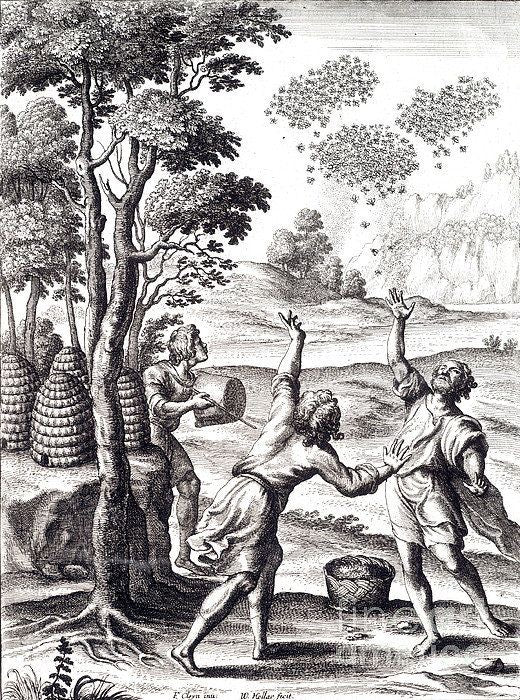
A Short History of Beekeeping
Alyssa RiceShare
This weekend, Kendallville, Indiana will be hosting their annual “Kendallville Apple Festival”. First hosted in 1985 with the vision to educate and entertain, people gather from all over Northeast Indiana to experience our heritage first-hand by seeing vendors dressed in 1800s period clothing and using materials from that same era. In honor of this weekend's event, we thought it might be fun to share the early days of beekeeping and what that looked like during that period.
Beekeeping has been around for thousands of years. The earliest depiction of beekeeping was found in a cave drawing dating back 8,000 years. It had shown a man hanging from vines off the edge of a cliff face, reaching into the nest of bees without any type of protective equipment.
Of course, during the cavemen period, people lived off what they could forage. As civilization progressed, more and more people began to cultivate crops. Bee products were considered valuable items. By this time, honey was used for its medicinal properties, and wax was used by early civilizations to preserve writings, tooth fillings, and even embalming among other things. There weren't what we know as beehives today. Instead, natural beehives would be moved from the wild closer to the residents who were keeping them. That meant with every harvest, the colony would be destroyed. Each year then, people would have to hunt for a new hive to keep on their property. Soon though, it was discovered that instead of capturing a natural hive, hives could be created with raw material. Straw, sticks, mud, and clay were used and soon evolved into wicker and baskets known to many as skeps.
The earliest records of beekeeping in America were in Connecticut in 1644. Honey Bees were widely distributed along the Atlantic Coast and Mississippi River throughout the 1700s and soon spread to Ohio in 1788. The abundance of cheap lumber and lack of people trained in making skeps caused a rapid shift into box hives. From skeps, many created hives from hollowed logs built with lids to harvest honey without killing off the colony. In 1852, L.L. Langstroth patented a hive made of wood that contained moveable frames. That design is what most beekeepers still use today. This opened an opportunity for many people to grow from keeping just one hive to many. Quickly, more inventions followed that enabled beekeeping to become an industry. The wax comb foundation of 1857 made it possible for straight, consistent production of comb of predominantly worker cells. More worker cells means a higher production of honey. In 1865, Hruschka created the new centrifugal honey extractor. With some minor improvements made on the original design, it made it possible for large scale production of honey to begin.
Although much of what is used in honey production today differs from the 1800s, it’s always a fun opportunity to learn about honey production in the early years and see how far we’ve come since then. We hope to see you all at the Kendallville Apple festival this weekend!
